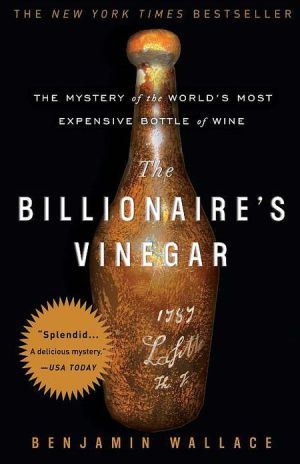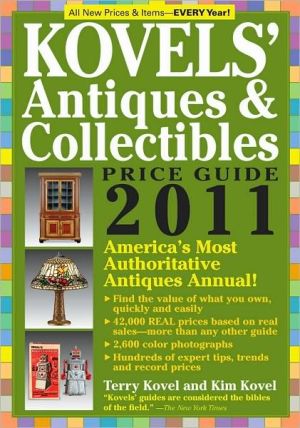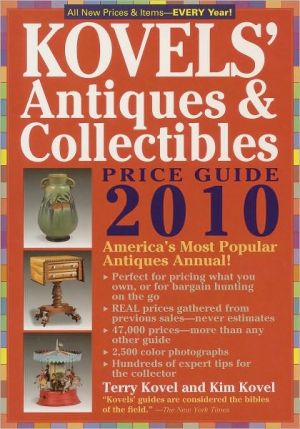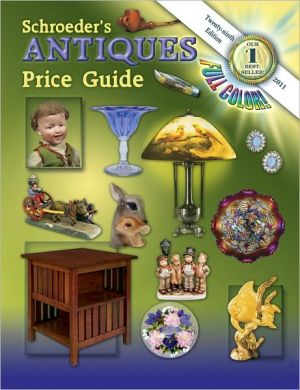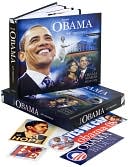The Billionaire's Vinegar: The Mystery of the World's Most Expensive Bottle of Wine
The rivetingly strange story of the world's most expensive bottle of wine, and the even stranger characters whose lives have intersected with it. The New York Times bestseller, updated with a new epilogue, that tells the true story of a 1787 Château Lafite Bordeaux—supposedly owned by Thomas Jefferson—that sold for $156,000 at auction and of the eccentrics whose lives intersected with it. Was it truly entombed in a Paris cellar for two hundred years? Or did it come from a secret Nazi...
Search in google:
“Part detective story, part wine history, this is one juicy tale, even for those with no interest in the fruit of the vine. . . . As delicious as a true vintage Lafite.” —BusinessWeekThe Billionaire’s Vinegar tells the true story of a 1787 Château Lafite Bordeaux—supposedly owned by Thomas Jefferson—that sold for $156,000 at auction and of the eccentrics whose lives intersected with it. Was it truly entombed in a Paris cellar for two hundred years? Or did it come from a secret Nazi bunker? Or from the moldy basement of a devilishly brilliant con artist? As Benjamin Wallace unravels the mystery, we meet a gallery of intriguing players—from the bicycle-riding British auctioneer who speaks of wines as if they are women to the obsessive wine collector who discovered the bottle. Suspenseful and thrillingly strange, this is the vintage tale of what could be the most elaborate con since the Hitler diaries. Updated for paperback with a new epilogue.The New York Times - Bryan Miller…captivating…Wallace frames his narrative as a suspenseful mystery, although we pretty well know whodunit early on. He escorts readers through the fast and fulsome world of high-stakes wine collecting, where $1,000 bottles of grand cru Burgundy are guzzled like lemonade and conversations revolve around trophy wines in home cellars that can be the size of a high school gymnasium.
Chapter 1\ Lot 337\ A hush had come over the West Room. Photographers' flashes strobed the standing-room-only crowd silently, and the lone sound was the crisp voice of the auctioneer. To the world, Michael Broadbent projected a central-casting British cool, but under the bespoke suit, he was practicing a kind of mind control that calmed him in these situations. The trick was to focus narrowly, almost autistically, on numbers: lot number, number of bidders, paddle numbers, bid steps.\ Even after all these years, he still found it bracingly creative to conjure excitement out of a heap of dirty old bottles. No matter how many of them the fifty-eight-year-old Broadbent might see, he retained his boyish sense of marvel at the longevity of wine. Inert antiques were all very well, but there was magic in old wine—a mysterious and wonderful alchemy in something that could live and change for two hundred years and still be drinkable.\ Auctioneer was Broadbent's most public role, but it was only one of his distinctions in the wine world. In London he cut a familiar figure, pedaling to work each day on his Dutch ladies' bicycle with basket, legs gunning furiously, a trilby hat perched on his head. Often he was elsewhere, and he kept up a brutal schedule. As founding director of the Christie's wine department, he had spent the last two decades crisscrossing the planet, cataloging the dank and dusty contents of rich men's cellars, tasting tens of thousands of fine wines, and jotting his impressions in slender red hardcover notebooks. Those unassuming scribblings amounted to the most comprehensive diary of wine ever recorded. That diary now consisted of sixty of the Ideal notebooks, and he had collected them in a published tome that was the standard reference on old wines. Under Broadbent's direction, Christie's had largely invented and come to dominate the global market in old and rare wines. While Christie's as a whole was smaller than its great rival, Sotheby's, its wine department was more than twice as big, bringing in 7.3 million the previous season.\ Broadbent's peers in the trade acknowledged that his palate was the most experienced in the world. His pocket textbook on wine tasting, the definitive work of its kind, was in its eleventh edition, having sold more than 160,000 copies, and had been translated into eight languages. Any collector hosting an event that aspired to any seriousness made sure to invite Broadbent and his famously sensitive nose. When he arrived at a wine gathering, if so much as a trace of woodsmoke or the merest whiff of cigarette ash besmirched the air, Broadbent would scrunch up his nose, and everything would come to a halt while windows and doors were flung open.\ A lean six feet tall, Broadbent had a fringy sweep of whitening hair, and his smile, distinctly hail-fellow-well-met, was tempered by the cocked eyebrow of a worldly man. He looked more aristocratic than many of the dukes and princes alongside whom he sat on Christie's board of directors.\ When Broadbent tasted, he would lay his wristwatch next to his little red notebook, so that he could time the wine's changes in the glass. During lulls, if a piano was on hand, he might charm guests with some Brahms, or he might go off by himself to sketch the local scenery.\ He was happy to opine, at these tastings, on the wines under consideration. He had a knack for putting wine into memorable words. Sometimes he borrowed from literature, describing one wine as "black as Egypt's night." More often, he minted his own rakish descriptions, seeing a woman in every wine. A '79 Pétrus reminded him of Sophia Loren: "You can admire them, but you don't want to go to bed with them." A double magnum of '47 Cantenac-Brown evoked chocolate and "schoolgirls' uniforms."\ The taste of the wine he was selling right now in London, just past 2:30 p.m. on Thursday, December 5, 1985, was impossible to know. December 5 had special meaning for Broadbent; it was the same date that James Christie, in 1766, had held the auction house's very first sale. Moments earlier, Broadbent had stepped up to the rostrum in a three-piece suit with a pocket square, and peered out at the room through his eyeglasses.\ Lot 337 was the first item of the afternoon session and had been carefully removed from its green felt berth in a glass case nearby. Lucy Godsal, a secretary in Broadbent's office, held the bottle aloft for the room to see. She looked very Christie's—blond, headband, pearl necklace—and Broadbent liked her; she was smart, hardworking, and pretty.\ Broadbent had never sold anything quite like this before. A Chäteau Lafite from 1787, it was the oldest authenticated vintage red wine ever to come up for auction at Christie's. And that was the least of its merits. The bottle was engraved with the initials "Th.J." As Broadbent had described it in the auction catalog, "Th.J. are the initials of Thomas Jefferson." Almost miraculously, the bottle was full of wine and appeared to have survived two centuries intact. The container itself was beautiful and distinctive. "This is one time," Broadbent quipped to the crowd, "when the buyer will get something back on the bottle."\ The admittedly fragmentary tale of how the bottle had been found only added to its mystique. According to Hardy Rodenstock, the German collector who had consigned the bottle to Christie's, in the spring of 1985 workers tearing down a house in Paris had broken through a false wall in the basement and happened upon a hidden cache of extremely old wines. The Lafite, inscribed with the initials of the Founding Father, who had lived in Paris from 1784 to 1789 and was the foremost American wine connoisseur of his day, had been among them.\ The integrity of the seals, and the high fill levels, Rodenstock had told Broadbent, were remarkable for their age. The cellar had been almost hermetically preserved, its steady temperature in the sweet spot of 50 to 57 degrees Fahrenheit. Rodenstock theorized that the bottles had been walled up to protect them during the chaos of the French Revolution, and had lain undisturbed for two hundred years.\ Not surprisingly, Rodenstock refused to divulge the precise location, the exact number of bottles, or anything else about the discovery, despite Broadbent's entreaties. Rodenstock was the leading private collector in Europe, and he had already made a name for himself in rare-wine circles as an unusually skilled bottle hunter. Though he was a longtime customer of Christie's, Rodenstock was a competitor when it came to obtaining private cellars. Private-cellar purchases were often cash deals that went unreported to tax authorities. A certain reticence about his sources was to be expected.\ Broadbent felt there were a couple of possibilities. One was that the bottle had indeed been discovered during the excavations of the old Marais district in Paris, much of which had recently been torn up and redeveloped. A rumor less credited by Broadbent, and which he had no intention of putting in the catalog copy, was that the bottle had been part of some sort of Nazi cellar.\ Broadbent knew Rodenstock well, trusted him, and would not normally be too concerned with how he had obtained the bottle. But to Broadbent's annoyance, a historical researcher in America had recently been making noises in the press, questioning whether the bottle was in fact Jefferson's. Broadbent had conducted his own research and was satisfied that the circumstantial evidence argued overwhelmingly in favor of the attribution. He couldn't prove it, but on balance, the inducements to proceed outweighed any risk of embarrassment.\ The auctioneer's delight in an object that would sell itself accounted for only half of Broadbent's excitement. There was also the oenophile's anticipation, for Lafite was Broadbent's favorite wine. He loved the way it developed in the glass, revealing new depths and facets as it breathed. He thought Lafite the acme of elegance, a racehorse beside the thoroughbred of Mouton and the carthorse of Latour. But to open a bottle as old as this was to play roulette; Broadbent couldn't help wondering what it might taste like. And how to price such an object? When cataloging it for auction, Broadbent gave the estimate as "inestimable." He was rather pleased with his pun.\ A number of commission bids—those placed in advance by bidders who could not, or didn't want to, attend—had come in. Chateau Lafite-Rothschild, modern successor to the eighteenth-century vineyard, had placed a 5,000 bid; this had been so eclipsed by other advance bids that the Chateau was out of the running before the session even began. Broadbent could feel confident that a new single-bottle price record was about to be set.\ In the West Room, he opened the bidding at 10,000. At first the bids came slowly, moving in 2,000 increments. A paddle would rise here. Another would bob up there. But things quickly heated up, and soon several people were raising paddles at every step.\ Broadbent knew everyone in the London trade, and many of them were here in this room, but he reserved his greatest expectations for the Americans. The Jefferson connection, the strength of the dollar (it had hit a historic high earlier in the year), recent auction history—all these factors would surely tempt a deep-pocketed Yank to repatriate the bottle. Marvin Shanken, publisher of the magazine Wine Spectator, was here today, but Broadbent's highest hopes were aimed at the fellow who sat left of the center aisle from where Broadbent stood: Christoper "Kip" Forbes, the thirty-five-year-old son of publisher Malcolm Forbes.\ Broadbent didn't think much of Malcolm Forbes, finding him to be a mean sort of chap. He knew that the American publisher collected first growths, the top-ranked Bordeaux reds, though only in lousy vintages. But it was undeniable that Forbes had money and would spend it for something he wanted, and Kip soon entered the bidding.\ The price volleyed remorselessly to 20,000, then 30,000. At 40,000, it seemed, fleetingly, that a cap might have been reached, but the bidding resurged. Only after Kip Forbes bid 50,000—$75,000—did all the other paddles stay down. This was a new record for a bottle of wine, by a wide margin. The previous record, set the year before at an auction in Dallas, was $38,000 for a Jeroboam (equivalent to six bottles) of 1870 Mouton-Rothschild; the record for a normal-size bottle was $31,000, paid in 1980 for an 1822 Lafite. Today's price now far exceeded Broadbent's most wishful imaginings. He felt vindicated by his decision to go ahead with the sale.\ He began the ritual countdown. "Any more?"\ He scanned the crowd for takers. "Any more?"\ Again Broadbent looked around the room, daring the bidders with his eyes to outdo Forbes. Nothing.\ Then, at the rear of the room, he saw a movement.\ Chapter 2\ Incognito\ On February 22, 1788, writing from Paris, Thomas Jefferson placed an order for 250 bottles of Lafite. In the past he would have sent the letter to one of the merchants through whom he had previously made his wine requests. But on this occasion he wrote directly to the owner of the property, having recently become wise to the dangers of doing otherwise.\ Now forty-four years old, Jefferson was an especially tall man by eighteenth-century standards, topping six foot two, with an erect posture, a ruddy, freckled face, and fair, reddish hair. He had spent the last four years as American commissioner, and then minister, to France. Faint tremors of class struggle had become the insistent rumblings of the early French Revolution, and Jefferson was torn. The author of the Declaration of Independence sympathized with the poor and oppressed, while the gourmand and the architect of Monticello were drawn to the refinements of salon culture.\ He had welcomed the chance to come to Europe. Jefferson's beloved wife, Martha, had died when he was just thirty-nine, leaving him a grieving widower and single father. And Jefferson had dreamed of coming to France since he was a young man. The diversions of Paris were exactly what he needed to lift him out of his depression. In contrast to his earthier fellow minister, Ben Franklin, who was legendary in the City of Light for wearing a beaver hat and biting the heads off asparagus, Jefferson fit right in.\ Though he called himself "a savage of the mountains of America," in France Jefferson took to wearing a powdered wig and a topaz ring. His mansion on the Champs-Elysees was a place of blue silk damask curtains, crystal decanters, a well-stocked wine cellar, and a household staff that included a frotteur, whose sole function was to clean the parquet floors by spinning around with brushes strapped to his feet. Intoxicated with the French high life, Jefferson hosted frequent dinner parties, serving some of the best wines of France.\ Jefferson was not the only Founding Father who was fond of wine. Ben Franklin, for one, kept a substantial cellar in Paris and called wine "proof that God loves us and that he likes to see us happy." But Jefferson, who had been ordering wine for many years, had recently acquired an unmatched breadth and depth of knowledge about the subject.\ Not only had he learned which were the best wines, but he had also become savvy about the mischief to which an unwary consumer might fall prey. In his 1788 letter to the owner of Lafite, Jefferson spelled out his concern directly: "If it would be possible to have them bottled and packed at your estate, it would doubtless be a guarantee that the wine was genuine, and the drawing-off and so forth well done." Jefferson owed his newfound wine sophistication to a life-changing trip he had made the year before.\ The time was ripe for an escape from Paris. He had become infatuated with a married English-Italian woman, Maria Cosway, but by early 1787 the romance seemed to have fizzled. In February, with his daughter Patsy safely cloistered in a convent school and his official duties in the hands of William Short, his trusted personal secretary, Jefferson embarked on a tour of France and northern Italy. He had dislocated his right wrist in a mysterious accident—historians have speculated that he was trying to jump over a fence to impress Cosway—and he justified the trip as being curative.\ His itinerary also happened to take him through all of the country's major wine regions. In view of Jefferson's personal debts, which were already substantial, and the momentous challenges facing the struggling young country that was paying his way in Europe, the decision to take a three-and-a-half-month vacation could be seen as almost comically self-indulgent. Patsy Jefferson noted rather freshly, in a letter to her father a week after he left Paris, that she was "inclined to think that your voyage is rather for your pleasure than for your health."\ Jefferson had been keen on wine for a long time. When he began building Monticello in 1769, at the age of twenty-six, the first part constructed was the wine cellar.
1 Lot 337 12 Incognito 73 Tomb Raider 214 Monsieur Yquem 415 Provenance 576 "We Did What You Told Us" 677 Imaginary Value 818 The Sweetness of Death 959 Salad Dressing 10710 A Pleasant Stain, but Not a Great One 12511 The Diviner of Wines 13912 A Built-in Preference for the Obvious 15313 Radioactive 17314 Letters from Hubsi 18315 "Awash in Fakes" 19716 The Last Vertical 21317 Koch Bottles 22518 Ghost Particles 23719 Tailing Meinhard 25120 The Finish 265Notes 283Acknowledgements 315
\ From Barnes & NobleBarnes & Noble Discover Great New Writers\ In 1985, a single bottle of wine went up for auction at Christie's in London. Two minutes later, it sold for over $150,000 to a member of the Forbes clan, demolishing the previous record paid for a single bottle. But this was no ordinary wine -- it was a 1787 Lafitte (now spelled Lafite), engraved with Thomas Jefferson's initials, found in excellent condition amid a cache of bottles hidden in an old house in Paris.\ \ The story had everything: history, intrigue, and mystery. Jefferson lived in Paris during the years leading up to the French Revolution, and he may well have hidden his precious stash from potential rioters. Breathless wine experts authenticated the handblown bottle with its seal of black wax and engraved letters. Awed by the bottle's survival, they ignored the doubts of a Jefferson scholar at Monticello.\ \ Hardy Rodenstock, a man with a nose for finding valuable old vintages in the half-forgotten cellars of stately British homes, owned the Jefferson cache. Exactly how he'd gotten it was unclear, but that was not unusual as dealers in rare wines understandably protect their sources. Tycoons clamored to buy the remaining Jefferson bottles, and as they did, a scandal unfolded like a fine Bordeaux swirled in Riedel crystal: an opening rich in hubris, a juicy hint of folly followed by deep undertones of greed. (Summer 2008 Selection)\ \ \ \ \ From the Publisher“Part detective story, part wine history, this is one juicy tale….as delicious as a true vintage Lafite.” \ —Business Week\ “Splendid...A delicious mystery that winds through musty European cellars, Jefferson-era France and Monticello, engravers' shops, a nuclear physics lab, rival auction houses and legendary multi-day tastings conducted by the shadowy German who had discovered the Jefferson collection...Ripe for Hollywood.”\ —USA Today\ “This is a gripping story, expertly handled by Benjamin Wallace who writes with wit and verve, drawing the reader into a subculture strewn with eccentrics and monomaniacs...Full of detail that will delight wine lovers. It will also appeal to anyone who merely savours a great tale, well told.”\ —The Economist\ "A page-turner…What makes Wallace's book worth reading is the way he fleshes out the tale with entertaining digressions into Jefferson's wine adventures, how to fake wines (who knew a shotgun blast could make a bottle look old?) and dead-on portraits of several major wine personalities who intersected unhappily with the wines.”\ —Bloomberg\ "Wallace’s depiction of rabid oenophiles staging almost decadent events to swill rare wine, knowingly depleting the reserves, are as much fun as the mystery."\ —The New York Daily News\ “A riveting wine history, wine mystery, and more.”\ —Dana Cowin, editor in chief of Food & Wine\ "For anyone with at least a curiosity about precious old wines and the love of a good story, this well-crafted piece of journalism may prove as intriguing and enjoyable as a fine old Bordeaux.”\ —Seattle Times\ "The season's wine reading cannot get off to a better start than with The Billionaire’s Vinegar, one of the rare books on wine that transcends the genre ...Though the story is the collector’s world, the subject is also greed and how it can contort reality to fit one’s desires. It’s been optioned for Hollywood. I hope the movie’s as good as the book.” \ —Eric Asimov, The Pour, New York Times\ “It is the fine details—the bouquet, the body, the notes, the finish—that make this book such a lasting pleasure, to be savored and remembered long after the last page is turned. Ben Wallace has told a splendid story just wonderfully, his touch light and deft, his instinct pitch-perfect. Of all the marvelous legends of the wine trade, this curiously unforgettable saga most amply deserves the appellation: a classic.”\ —Simon Winchester, author of The Professor and the Madman and A Crack in the Edge of the World\ “The Billionaire’s Vinegar is the ultimate page-turner. Written with literary intelligence, it has a cast of characters like something out Fawlty Towers meets The Departed. It takes you into a subculture so deep and delicious, you can almost taste the wine that turns so many seemingly rational people into madmen. It is superb nonfiction.”\ —Buzz Bissinger, author of Friday Night Lights\ \ \ \ Bruce SchoenfeldSomebody may have resisted the urge to yank open at least a few bottles of 1787 Chateau Lafitte (as it was then spelled) and enjoy them with a brace of partridges or an ascension of larks or whatever the French were eating at the time. Whether that somebody was Thomas Jefferson and whether a few bottles purported by a flamboyant collector to be from Jefferson's stash are actually Chateau Lafitte at all are mysteries that form the centerpiece of The Billionaire's Vinegar, Benjamin Wallace's entertaining look at wine forgery.\ —The Washington Post\ \ \ \ \ Bryan Miller…captivating…Wallace frames his narrative as a suspenseful mystery, although we pretty well know whodunit early on. He escorts readers through the fast and fulsome world of high-stakes wine collecting, where $1,000 bottles of grand cru Burgundy are guzzled like lemonade and conversations revolve around trophy wines in home cellars that can be the size of a high school gymnasium.\ —The New York Times\ \ \ \ \ Publishers WeeklyThe titular bottle, from a cache of allegedly fine, allegedly French wine, allegedly owned by Thomas Jefferson in the 1780s, set a record price when auctioned in 1985. The subsequent brouhaha over the cache's authenticity takes wine journalist Wallace on a piquant journey into the mirage-like world of rare wines. At its center are Hardy Rodenstock, an enigmatic German collector with a suspicious knack for unearthing implausibly old and drinkable wines, and Michael Broadbent, a Christie's wine expert, who auctioned Rodenstock's lucrative finds. The argument over the Jefferson bottles and other rarities aged for decades, flummoxed a wine establishment desperate to keep the cork in a controversy that might deflate the market for antique vintages. (In the author's telling, a 2006 lawsuit almost settles the issue.) Wallace sips the story slowly, taking leisurely digressions into techniques for faking wine and detecting same with everything from Monticello scholarship to nuclear physics. He paints a colorful backdrop of eccentric oenophiles, decadent tastings and overripe flavor rhetoric (Broadbent describes one wine as redolent of chocolate and "schoolgirls' uniforms"). Investigating wines so old and rare they could taste like anything, he playfully questions the very foundations of connoisseurship. (May)\ Copyright © Reed Business Information, a division of Reed Elsevier Inc. All rights reserved.\ \ \ \ \ Library JournalIn 1985 in London, the Forbes publishing family paid more than $150,000 for a nearly 200-year-old bottle of ChAoteau Lafite Bordeaux rumored to have once been owned by Thomas Jefferson. The bottle was part of a collection unearthed by German wine entrepreneur Hardy Rodenstock. At first only a few doubted the authenticity of the wine, but over time, as more bottles from the same cache were sold, the questions about Rodenstock and his Jeffersonian bottles kept coming. Wallace, a journalist who has written for magazines such as Food & Wine and Philadelphia, has crafted a richly intriguing tale of wine collecting, Thomas Jefferson, and the rivalry between the wine departments at Christie's and Sotheby's, following the trail of Rodenstock and his famous "discovery." With the same deliciously entertaining blend of history, mystery, and wine found in Don and Petie Kladstrup's Wine and War, Wallace's book is highly recommended for public libraries.\ —John Charles\ \ \ \ \ \ Kirkus ReviewsElaborate account of a delicious hoax played on the world's wine experts and fabulously wealthy. According to magazine writer Wallace, a chummy partnership between two well-connected Europeans largely created the interest in historic vintages that reached its apogee in 1985 with the $156,000 purchase by the Forbes family of a 1787 Chateau Lafite engraved with the initials "Th.J."-i.e., Thomas Jefferson. Michael Broadbent was the suave founding director of Christie's wine department, which had come to dominate the global market in old and rare wines to the tune of millions of dollars. Broadbent's palate was considered the most experienced in the world, and he scoured the cellars of his aristocratic acquaintances to unearth rare vintages. The purported Jefferson bottle was consigned to Christie's by German collector Hardy Rodenstock, who spun a hazy story of workers tearing down a house in Paris, breaking through a false wall and happening upon a cache of extremely old wines. Jefferson, America's first wine connoisseur, lived in Paris from 1784 to 1789 and began buying directly from the chateaux; with France disrupted by revolution, this particular order apparently didn't make it back to Monticello. Rodenstock boasted that he had purchased two dozen engraved bottles of 1784 and 1787 vintages of Lafite, Margaux, Yquem and Branne-Mouton (all of which dribbled to market), but he would not divulge the seller, and the wine's provenance came under suspicion. Wallace traces various attempts to determine the bottles' authenticity, including analysis of ullage (fill level), cork, label, engraving, bottle and the taste of the ancient liquid, often doctored by adding later vintages. The author offersa revealing look at the influx into the esoteric field of wine connoisseurship of major-player egos and big money, which created a tricky and rarified market similar to that for expensive art-and encouraged fakes in both. Rote journalism injected with considerable padding, but there's no denying the appeal of this enthrallingly mad and recondite subject. Agent: Larry Weissman/Larry Weissman Literary\ \
